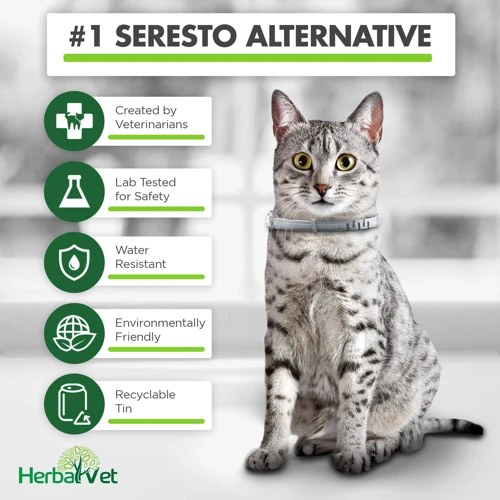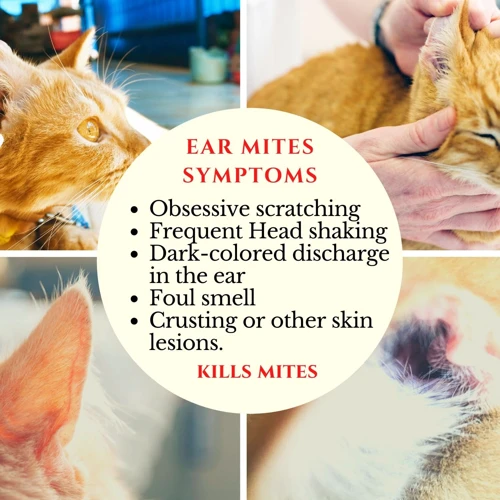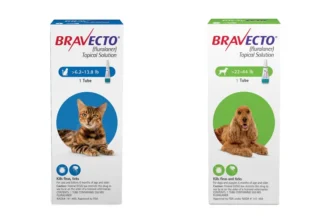Introduction

Before diving into parasite control in multi-cat households, it’s important to understand the significance of preventing and treating parasites in pets. Parasites such as fleas, ticks, ear mites, and worms can cause a range of health issues, from itching and irritation to more severe illnesses. California Spangled cat owners in particular should take note of the unique challenges that come with multi-cat households, where parasites can easily spread from one cat to another. In this article, we’ll explore tips and tricks for effective parasite control in multi-cat households, from preventative measures to treatment options to working with a veterinarian.
The Importance of Parasite Control for Pet Health
Parasite control is crucial for the health of pets, including California Spangled cats. Parasites like fleas, ticks, ear mites, and worms can cause a range of health problems, from minor irritation to life-threatening conditions. It’s essential to take preventative measures and seek treatment options when needed to keep your cat healthy and happy.
Preventative measures are the most effective way to control parasites. These measures include maintaining a clean environment, regular grooming, and using flea and tick prevention products. Additionally, it’s crucial to feed your cat a healthy and nutritious diet to maintain their immune system and prevent the likelihood of infections.
Treatment options for parasites depend on the type of infestation and severity. Flea infestations can be treated with topical or oral medications that kill adult fleas and prevent their eggs from hatching. Ticks should be removed with tweezers immediately and monitored for any signs of infection. Ear mites can be treated with medication that your veterinarian prescribes after examining your cat’s ears. Worms are treated with medications that kill intestinal parasites and prevent their recurrence.
Ignoring parasites can be a serious mistake. They can cause harm to your cat and other pets in your household. In some cases, parasites can cause issues for people living in the same house. So, it is crucial to maintain proper parasite control for the overall health and wellbeing of your California Spangled cat.
Regular check-ups with a veterinarian are also an essential part of parasite control. Your veterinarian can examine your cat for parasites and provide preventative treatment options that are safe and effective. Additionally, your vet can provide advice on how to maintain a clean and safe environment to prevent parasitic infections.
Parasitic infections can cause discomfort to your California Spangled cat. It is essential to recognize the signs and symptoms and seek treatment options immediately. Taking preventative measures against parasitic infestations can help keep your cat healthy and safe. With proper care and attention, you can help prevent parasites and keep your California Spangled cat healthy and happy for years to come.
Unique Challenges of Multi-Cat Households
Having several cats in one household can be both rewarding and challenging. While it’s lovely to see your felines interact and play together, living in close quarters can also pose problems for parasite control. Cats can catch parasites from a variety of sources, and once one cat is infested, it can be challenging to prevent other cats in the home from becoming infected. Some unique challenges that California Spangled owners face in multi-cat households include:
- Increased risk of transmission: Parasites such as fleas and ticks can easily pass from one cat to another in a multi-cat household. When one cat picks up a parasite outside, for example, it can quickly spread to the other cats inside. This makes it difficult to contain the infestation, and it may require specialized treatment methods to get under control.
- Increased potential for re-infestation: In multi-cat households, it’s not enough to treat one cat for a parasite infestation. All the cats in the home will need to be treated, and their surroundings will need to be thoroughly cleaned to prevent re-infestation. The more cats you have in the home, the more complex this process can become.
- Increased risk of heartworm: Heartworm is a danger to cats and one of the most severe consequences of untreated parasite infestations. In multi-cat households, the risk of heartworm transmission may be higher, as mosquitoes can bite one infected cat and quickly spread the parasite to other cats in the home. Preventing heartworm is a crucial part of keeping all your cats healthy in a multi-cat household.
Despite these challenges, there are many steps California Spangled owners can take to prevent and treat parasite infestations in multi-cat households. It’s essential to use preventative measures and to work closely with your veterinarian to develop a parasite control plan tailored to your specific situation. By doing so, you can protect not only your cats but also your family from the dangers of parasites. For more information, see our article on Parasite Control in California Spangled Cats, Natural Remedies for Parasite Control in California Spangled Cats, Common Parasites at Home for California Spangled Cats, and Heartworm Prevention in California Spangled Cats.
Flea Control

Fleas are pesky little creatures that can cause a lot of discomfort for both you and your pets. These small, wingless insects feed on the blood of animals and can cause itching, skin irritation, and even transmit diseases. If you’re a California Spangled owner with a multi-cat household, keeping fleas under control is essential for the health and happiness of your pets. In this section, we’ll explore some preventative measures and treatment options for flea control that specifically cater to multi-cat households. So, let’s dive in and make sure those fleas don’t stand a chance!
Preventative Measures
Preventing parasites in multi-cat households is crucial for maintaining the overall health and well-being of your feline friends. There are several measures you can take to prevent parasitic infestations and keep your cats happy and healthy.
Flea Prevention:
Fleas are a common problem in multi-cat households, and they can be tough to get rid of once they infest your home. Preventative measures include monthly flea treatments, regular grooming, and vacuuming your home frequently. You can also use flea collars or flea sprays to keep these pesky insects at bay.
Tick Prevention:
Ticks can carry several diseases that can be dangerous for both cats and humans. To prevent tick infestations, you should regularly check your cats for ticks after they spend time outside, especially in areas with tall grass or wooded areas. Consider using tick repellant treatments and keep the outdoor area free of debris that can attract ticks.
Ear Mite Prevention:
Ear mites are contagious and can easily spread from cat to cat. To prevent ear mites, make sure to clean your cat’s ears regularly, especially if they spend time outside or in contact with other cats. If you suspect your cat has ear mites, take them to the vet immediately for treatment.
Worm Prevention:
Worms are another common issue in multi-cat households. To prevent worm infestations, keep your cat’s litter boxes clean, avoid raw or undercooked meat, and consider regular deworming treatments. It’s also important to keep your cats indoors to prevent them from coming into contact with other animals that may carry worms.
Environmental Control:
Keeping your home free of parasites is crucial when it comes to preventing infestations. Regular cleaning, especially in areas where your cats spend most of their time, can help keep fleas and other pests at bay. Additionally, consider using natural remedies such as diatomaceous earth or essential oils to repel insects.
| Parasite Type | Preventative Measures |
|---|---|
| Fleas | Monthly flea treatments, regular grooming, vacuuming, flea collars or sprays |
| Ticks | Regular tick checks, tick repellant treatments, keeping outdoor areas clean |
| Ear Mites | Regular ear cleaning, avoiding contact with infected cats, immediate treatment if symptoms arise |
| Worms | Clean litter boxes, avoid raw or undercooked meat, regular deworming treatments, keep cats indoors to avoid contact with infected animals |
| Environmental Control | Regular cleaning, natural remedies such as diatomaceous earth and essential oils |
Implementing these preventative measures can help keep your multi-cat household free of pesky parasites and keep your furry friends healthy and happy. Remember to work closely with your veterinarian to determine the best course of action for your cats and to ensure they are up-to-date on their preventative treatments.
Treatment Options
When it comes to treating parasites in multi-cat households, there are several options available to California Spangled owners. It’s important to note that different parasites may require different types of treatment, so it’s best to work with a veterinarian to determine the most effective option.
Flea Treatment Options:
- Topical flea treatments: These are applied to the skin and work by spreading across the cat’s body to kill fleas and their eggs
- Oral flea treatments: These are ingested orally and work by killing fleas when they bite the cat
- Flea collars: These are worn around the cat’s neck and work by releasing flea-repelling chemicals
- Flea shampoos: These work by killing fleas and soothing irritated skin, but may require frequent bathing to be effective
Tick Treatment Options:
- Topical tick treatments: These are applied to the skin and work by killing ticks and preventing infestations
- Oral tick treatments: These are ingested orally and work by killing ticks when they bite the cat
- Tick collars: These are worn around the cat’s neck and release tick-repelling chemicals
- Tweezers: For manually removing ticks, tweezers can be used to carefully remove the bug from the cat’s skin
Ear Mite Treatment Options:
- Topical ear mite treatments: These are applied directly to the cat’s ears and work by killing ear mites
- Oral medications: These are ingested orally and work by killing ear mites when they feed on the cat’s blood
- Cleaning solutions: These are used to clean the cat’s ears and remove debris left behind by ear mites
Worm Treatment Options:
- Oral medications: These are ingested orally and work to kill internal parasites such as roundworms and tapeworms
- Injections: Some medications may be given via injection for more severe cases of parasitic infestation
- Suppositories: Certain medications may be administered via suppository to treat parasites in the rectum
Remember to always follow dosage instructions carefully and work with a veterinarian to determine the most effective treatment option for your California Spangled cat.
Tick Control

As much as we love our feline friends, unfortunately, they aren’t immune to tick infestation, especially if they are outdoor cats. Ticks can pose a serious health risk to your California Spangled, as they are known to transmit various diseases, such as Lyme disease and Rocky Mountain spotted fever. It is crucial to take measures to prevent and control tick infestation to ensure the health and well-being of your furry friends. In this section, we will explore some effective ways to control ticks in multi-cat households, including preventative measures and treatment options. Let’s dive in and learn how we can protect our beloved California Spangled from tick-borne illnesses.
Preventative Measures
It is important to take preventative measures to protect your California Spangled cats from parasites like fleas, ticks, ear mites, and worms. Here are some strategies you can use to prevent parasites from invading your multi-cat household:
| Parasite Type | Preventative Measures |
|---|---|
| Fleas | Regular grooming with a flea comb, vacuuming carpets and furniture, washing bedding weekly, using flea preventatives such as topical solutions or oral medications recommended by your veterinarian. |
| Ticks | Trimming tall grass and overgrown bushes, checking your cats regularly for ticks, removing ticks promptly with tweezers or a tick removal tool, using tick preventatives such as collars or spot-on treatments as recommended by your veterinarian. |
| Ear Mites | Cleaning your cats’ ears regularly with a veterinarian-approved solution, keeping your cats indoors to minimize exposure to other cats with ear mites, treating all cats in the household if one is diagnosed with ear mites, and using preventatives such as topical solutions or ear drops as recommended by your veterinarian. |
| Worms | Regular deworming treatment as recommended by your veterinarian, keeping litter boxes and living areas clean and free of feces, disposing of feces promptly and properly, and feeding your cats a balanced diet that includes a high-quality source of protein. |
These preventative measures can help keep your multi-cat household free from parasites and protect the health of your California Spangled cats. Remember, it’s always a good idea to consult with your veterinarian to determine the best preventative measures for your specific cats and household.
Treatment Options
When it comes to treating parasites on cats, there are several options available. It is important to note that certain treatments are only appropriate for certain types of parasites, so it’s best to consult a veterinarian for an accurate diagnosis before starting any treatment. Here are a few treatment options for common parasites in multi-cat households:
| Parasite Type | Treatment |
|---|---|
| Fleas | Topical treatments: These are applied directly to the cat’s skin and are typically effective for up to a month. Brands like Frontline and Advantage are popular options.
Oral medications: These are given to the cat in the form of a pill or chewable tablet. They are also effective for up to a month and work by preventing flea eggs from hatching. |
| Ticks | Tick collars: These collars are impregnated with chemicals that repel ticks. They are not as effective as other treatments but may be a good option for cats that spend a lot of time outdoors.
Topical treatments: Similar to flea treatments, these are applied directly to the cat’s skin and are effective for up to a month. Brands like Frontline and Advantix are popular options. Oral medications: These are given to the cat in the form of a pill or chewable tablet. Brands like Bravecto and Nexgard are popular options and are effective for up to 3 months. |
| Ear Mites | Ear drops: These are applied directly to the cat’s ear and typically need to be administered over several weeks. Brands like Revolution and Advantage Multi are popular options.
Oral medications: These are given to the cat in the form of a pill or chewable tablet. Brands like Milbemax and Panacur are popular options. Injectable medications: One injection of milbemycin oxime is highly effective at treating ear mites but may be more expensive than other treatment options. |
| Worms | Deworming medication: There are many types of deworming medication available, and your veterinarian can recommend the best one for your cat based on the type of worm and your cat’s age and weight. Brands like Drontal and Profender are popular options.
Prescription diets: Some prescription diets are formulated to prevent certain types of worms. If your cat is prone to getting worms, your veterinarian may recommend a prescription diet in addition to deworming medication. |
Remember that prevention is always better than treatment. Keeping your cats and their environment clean and using preventative measures can help reduce the risk of parasites in multi-cat households. And always follow your veterinarian’s advice when it comes to treating parasites on your beloved California Spangled cats.
Ear Mite Control

As a California Spangled owner with a multi-cat household, it’s important to be aware of the potential threat ear mites can pose to your furry friends. Ear mites are tiny parasites that live in the ear canal of cats, causing irritation and discomfort. The thought of your furry companions suffering from such a condition can be perplexing. However, with proper preventative measures and treatment options, you can help keep your cats free from ear mites and the discomfort they can cause. Let’s take a closer look at the steps you can take to control ear mites in your multi-cat household.
Preventative Measures
Preventing parasites is always better than dealing with them later. By taking a few preventative measures you can prevent parasites from infesting your home and your beloved California Spangled cats. Here are some methods that you can use for preventing parasites.
| Preventative Measures for Flea Control |
|---|
| 1. Regular grooming session: Brushing your cat’s hair regularly will help you to identify and remove fleas. |
| 2. Yard maintenance: Keep your yard clean and tidy, regularly mow the lawn, and remove any debris or leaf piles where fleas might thrive. |
| 3. Vacuuming: Vacuum your carpets, rugs, and furniture frequently. Fleas and their eggs can easily hide in tight corners, so be sure to vacuum all areas. |
| 4. Medications: Visit your veterinarian to get the right prescription of flea preventive medication for your California Spangled cat. |
| Preventative Measures for Tick Control |
|---|
| 1. Avoid tick-infested areas: Try to avoid areas where ticks are commonly found such as tall grasses and wooded areas. |
| 2. Regular grooming session: Brush your cat’s hair regularly and check for any ticks on their body. |
| 3. Oral preventive medicines: Speak to your veterinarian about oral tick preventive medications for your California Spangled cat. |
| Preventative Measures for Ear Mite Control |
|---|
| 1. Regular grooming session: Clean your cat’s ears to remove any dirt, wax, or debris that might attract ear mites. |
| 2. Avoid contact with infected animals: Ear mites can easily transfer to your cat from other infected animals through close contact. |
| 3. Oral preventive medicines: Speak to your veterinarian about oral ear mite preventive medications for your California Spangled cat. |
| Preventative Measures for Worm Control |
|---|
| 1. Regular deworming: Speak to your veterinarian about regular deworming treatments for your California Spangled cat. |
| 2. Proper sanitation: Keep your cat’s litter box and feeding areas clean, and dispose of feces properly to prevent infection. |
| 3. Medications: Speak to your veterinarian about the right prescription of antiparasitic medication for your California Spangled cat. |
By following these simple preventative measures, you can not only keep unwanted parasites away from your cat and home, but also ensure their overall wellbeing.
Treatment Options
When it comes to treating parasites in multi-cat households, there are several options available. It’s important to choose the right treatment option based on the type of parasite and the severity of the problem. Here are some treatment options to consider:
1. Flea Control
- Topical treatments: Medications like Frontline and Advantage are applied directly to your cat’s skin. These medications kill adult fleas and prevent future infestations.
- Oral medications: Pills like Comfortis and Capstar can be given to your cat to kill fleas. These medications work quickly, but do not provide long-term prevention.
- Flea collars: Collars like Seresto are worn around your cat’s neck and provide long-term protection against fleas.
2. Tick Control
- Topical treatments: Medications like Frontline and Advantix are applied directly to your cat’s skin. These medications kill ticks and prevent future infestations.
- Oral medications: Pills like Bravecto and Nexgard can be given to your cat to kill ticks. These medications work quickly, but do not provide long-term prevention.
- Tick collars: Collars like Scalibor are worn around your cat’s neck and provide long-term protection against ticks.
3. Ear Mite Control
- Ear drops: Prescription ear drops like Acarexx and Milbemite can be used to treat ear mites. These drops are applied directly to your cat’s ears and kill both adult mites and their eggs.
- Oral medications: Pills like Revolution can be given to your cat to treat ear mites. These medications work systemically and kill parasites throughout the body.
4. Worm Control
- Deworming medication: Prescription medications like Panacur and Drontal can be given to your cat to kill worms. These medications are usually given orally and kill both adult worms and their eggs.
- Over-the-counter medication: Products like Pyrantel and Praziquantel can be found at pet stores and used to treat worms. These medications are not as potent as prescription options and may require multiple doses.
Remember to always consult with your veterinarian before starting any treatment plan. They can help you choose the right option for your cat and ensure that the treatment is safe and effective.
Worm Control

Worms are a common problem among household pets, including California Spangled cats. Infestations can cause a variety of health issues, from mild stomach discomfort to severe malnutrition. It is essential to maintain effective worm control in a multi-cat household to ensure the health and wellbeing of all pets. In this section, we will discuss preventative measures and treatment options to keep worms at bay. So let’s dive into the world of worm control for California Spangled cats.
Preventative Measures
Preventative measures are an essential part of parasite control in multi-cat households. Here are some steps that California Spangled owners can take to prevent infestations:
| Flea Control | Tick Control | Ear Mite Control | Worm Control |
| Regularly groom pets. | Avoid walking pets in areas with high tick populations. | Keep cats indoors. | Administer routine deworming medication. |
| Use flea preventative medication as directed by a veterinarian. | Check pets for ticks after outdoor activity and remove them immediately. | Clean ears regularly with veterinarian-approved cleanser. | Practice good hygiene and sanitary practices, such as washing hands after handling pets and cleaning litter boxes daily. |
| Vacuum carpets, furniture, and pet bedding daily. | Maintain a tick-free outdoor environment, such as keeping grass mowed and removing leaf litter. | Isolate new cats and check for ear mites before introducing them to the household. | Avoid feeding raw meat to pets and keep their food and water dishes clean. |
Flea Control: Regular grooming, administration of flea preventative medication, and daily vacuuming can help prevent flea infestations in multi-cat households.
Tick Control: Avoiding high-risk tick areas, checking pets for ticks after outdoor activity, and maintaining a tick-free outdoor environment can help prevent tick infestations.
Ear Mite Control: Keeping cats indoors, cleaning ears regularly, and isolating new cats can help prevent ear mite infestations.
Worm Control: Administering routine deworming medication, practicing good hygiene and sanitary practices, and avoiding feeding raw meat to pets can help prevent worm infestations.
By taking these preventative measures, California Spangled owners can help keep their multi-cat households parasite-free and their furry friends healthy and happy.
Treatment Options
When it comes to treating parasites in multi-cat households, there are several treatment options available. These can include topical treatments, oral medications, collars, and environmental treatments. It is important to work closely with a veterinarian to determine the best course of treatment for your cats.
Topical Treatments: These are products that are applied directly to your cat’s skin. They work by killing fleas and ticks on contact, as well as preventing future infestations. Some popular topical treatments include Frontline Plus, Advantage, and Revolution.
Oral Medications: These medications are given to your cat orally and work by killing fleas and ticks from the inside out. They also prevent future infestations. Some popular oral medications include Nexgard, Bravecto, and Sentinel.
Collars: Flea and tick collars are worn around your cat’s neck and work by releasing chemicals that repel parasites. They can provide long-term protection, but it is important to ensure that the collar fits properly and is not too tight.
Environmental Treatments: These treatments focus on controlling parasites in the environment around your cat. This can include using flea and tick sprays on carpets and furniture, washing bedding in hot water, and vacuuming frequently. It is important to thoroughly clean and treat your home to prevent reinfection.
It is important to note that each treatment option comes with its own set of benefits and risks. It is important to discuss your options with a veterinarian and determine the best course of action for your pets. Additionally, always read and follow the instructions on any medication or treatment product carefully to ensure the safety of your cats.
Environmental Control

As a California Spangled owner with a multi-cat household, it’s important to consider all aspects of parasite control. While topical treatments and medication can be effective, it’s equally important to address the environmental factors that contribute to the influx of parasites. This is where environmental control comes into play. By implementing a few simple cleaning tips and home remedies, you can significantly decrease the risk of parasites infesting your home and affecting your furry companions. Let’s take a closer look at some effective methods for environmental control.
Cleaning Tips
Keeping a clean environment is crucial for parasite control in multi-cat households. Here are some cleaning tips to help you keep your home free from parasites:
- Vacuum regularly: Fleas and ticks can lay thousands of eggs within a short period of time. Vacuuming your carpets, floors and furniture at least once a week can help to remove eggs, larvae and adult parasites.
- Wash bedding and fabrics: Pet bedding, blankets and other fabric materials should be washed in hot water, at least once a week, to help remove any parasites residing inside them. It’s also a good idea to wash any human bedding and clothing that may have come into contact with your cats.
- Keep litter boxes clean: It is important to clean litter boxes regularly to prevent the accumulation of fecal matter which can contain eggs from parasites such as worms. The litter box should be cleaned at least once a day and the litter should be completely replaced every week.
- Use flea and tick preventives: Using flea and tick preventives regularly on cats can significantly reduce the number of parasites in the home. These products can either be topical, oral or collars.
- Steam cleaning: Steam cleaning carpets and furniture can also help to kill adult fleas and ticks in the environment.
- Sunlight exposure: Parasites like fleas, ticks and mites thrive in dark and damp environments. Allowing sunlight to enter the house and keeping it well ventilated can help to keep the environment dry and unfavorable for parasites.
Following these cleaning tips can help to reduce the risk of parasites spreading in multi-cat households. However, it is important to remember that environmental control should be used as a part of a comprehensive parasite control plan that includes preventative measures and treatment options.
Home Remedies for Prevention
As a California Spangled cat owner in a multi-cat household, you may be interested in natural ways to prevent parasite infestations. Here are some home remedies you can try:
- Regular grooming: Brushing your cats regularly can help remove any fleas that may be hiding in their fur. Additionally, keeping your home clean can prevent fleas from taking hold.
- Apple cider vinegar: Adding a small amount of apple cider vinegar to your cat’s water can help repel fleas and ticks. The acidity of the vinegar makes your cat’s blood unpalatable to fleas and ticks.
- Diatomaceous earth: Diatomaceous earth is a fine powder made from fossilized diatoms. When applied to your carpets and upholstery, it can kill flea larvae and prevent future infestations.
- Essential oils: Certain essential oils, such as lavender and cedarwood, can be effective in repelling fleas and ticks. However, you should consult with a veterinarian before using essential oils on your cat, as some oils can be toxic.
- Herbal flea collars: You can make your own flea collar using herbs such as chamomile and eucalyptus. Simply tie the herbs together in a piece of cloth and attach it to your cat’s collar.
While these home remedies may be effective in preventing parasite infestations, it’s important to remember that they are not a substitute for professional veterinary care. If you suspect your cat has a parasite infestation, it’s best to seek treatment from a veterinarian to ensure the health and safety of your furry friends.
Working with a Veterinarian
When it comes to maintaining the health of your California Spangled cats, working alongside a veterinarian is crucial. These highly-trained professionals provide expert advice, early detection of potential health issues, and effective treatment options. While pet owners can take preventative measures at home to limit the risk of parasites, partnering with a veterinarian ensures the best possible care for your feline friends. Let’s take a look at the benefits of regular checkups and the professional treatment options that are available.
Benefits of Regular Checkups
Regular veterinary checkups are essential for keeping your California Spangled cats healthy and happy. These appointments not only allow for necessary vaccinations and preventive measures, but they also provide numerous additional benefits.
Early Detection of Health Problems: Cats are notorious for hiding health issues until they become severe. Regular checkups allow veterinarians to identify and treat any problems in their early stages before they become serious and require costly treatments.
Preventive Care: Along with vaccinations, regular checkups also offer the opportunity for preventive care measures such as flea and tick prevention, deworming, and heartworm prevention. These measures not only keep your cats healthy, but they can also save money on expensive treatments down the road.
Personalized and Up-to-Date Recommendations: Each cat is unique and requires individualized care. Regular checkups give your veterinarian the chance to get to know your cats and make personalized recommendations for their care. Additionally, they can stay up-to-date on the latest treatments and technologies to provide the best care for your cats.
Maintaining Current Medical Records: Veterinary records are important for tracking your cat’s health, vaccinations, and treatments. Regular checkups ensure that your cat’s medical records are up-to-date and easily accessible in case of an emergency or if you need to transfer care to a new veterinarian.
Regular checkups with a veterinarian offer many benefits for the health and well-being of your California Spangled cats. By providing early detection and preventive care measures, personalized recommendations, and up-to-date medical records, you can help ensure that your cats lead long, healthy, and happy lives.
Professional Treatment Options
When it comes to treating parasites in multi-cat households, professional treatment options are often necessary. A veterinarian can provide a variety of treatments that are both safe and effective for your California Spangled cats. Here are some professional treatment options to consider:
- Prescription medications: Your vet may prescribe medication to treat and prevent flea and tick infestations. These medications can come in oral or topical forms and work by either killing or repelling parasites. It is important to follow your vet’s instructions carefully for administering these medications to ensure that they are used safely and effectively.
- Injections: In some cases, injections may be used to control parasites in multi-cat households. These injections typically provide long-lasting protection against fleas and ticks and can be a good option for cats that may not tolerate other forms of treatment.
- Medicated shampoos: Medicated shampoos may be recommended by your vet to treat and prevent flea and tick infestations. These shampoos contain chemicals that are effective at killing parasites and can be used in conjunction with other treatment options for best results.
- Pest control services: In severe cases, you may need to enlist the help of a pest control service to rid your home of parasites. These services use specialized treatments to eradicate fleas, ticks, and other parasites from your home environment.
It is important to remember that only a veterinarian can properly diagnose and treat parasite infestations in your California Spangled cats. Professional treatment options are often the most effective way to eliminate parasites and prevent future infestations. In addition to these treatments, your vet can provide guidance on preventative measures to keep your cats parasite-free and healthy.
Conclusion
In conclusion, controlling parasites in multi-cat households is crucial to ensuring the health and well-being of not only your California Spangled cats but also your entire family. Preventing and treating fleas, ticks, ear mites, and worms requires a multifaceted approach, including regular cleaning, preventative measures, and professional treatment options.
To prevent parasites from taking hold in your home, it is important to implement preventative measures such as regular grooming, keeping your cats up-to-date with their vaccinations, and avoiding contact with other animals who may be infected. Additionally, a thorough cleaning regimen, including washing bedding and vacuuming regularly, can help to prevent the spread of parasites.
If your cats do become infested with parasites, there are a variety of treatment options available, including topical treatments, oral medications, and in severe cases, professional intervention from a veterinarian. It is important to work closely with your veterinarian to determine the best course of treatment for your cats.
In summary, by taking a proactive approach to parasite control in your multi-cat household, you can help to ensure the health and happiness of your beloved California Spangled cats. Keep in mind that preventing and controlling parasites is an ongoing process and requires consistent effort and attention. By implementing the tips and tricks outlined in this article, you can help to keep your cats and your home parasite-free.
Frequently Asked Questions
What is the most common flea prevention method for multi-cat households?
The most common flea prevention method is using a monthly topical treatment such as Advantage, Revolution, or Frontline. These are easy to apply and effective in preventing flea infestations.
How can I check if my cats have fleas?
You can check your cats for fleas by using a flea comb to part the fur and look for small insects or fleas dirt (small black specks) on their skin. Fleas tend to congregate in areas with less fur such as behind the ears, on the belly, or between the legs.
What is the most effective way to remove ticks from cats?
The most effective way to remove ticks from cats is to use fine-tipped tweezers to grasp the tick’s head as close to the skin as possible and pull it straight out. It’s important to avoid twisting or squeezing the tick during removal to prevent leaving parts of the tick in the cat’s skin.
How often should I clean my cat’s ears to prevent ear mites?
Cleaning your cat’s ears once a week with a veterinarian-recommended ear cleaner can help to prevent ear mites. It’s important to never use cotton swabs or other foreign objects in your cat’s ears, as this can lead to injury or infection.
What is a common sign of a worm infestation in cats?
A common sign of a worm infestation in cats is the presence of tapeworm segments in their feces or around their anus. Other signs may include vomiting, diarrhea, weight loss, and a swollen abdomen.
Can I use essential oils for flea prevention in multi-cat households?
While some essential oils such as lavender and peppermint are known to repel fleas, it’s important to consult with your veterinarian before using them on your cats. Essential oils can be toxic to cats when ingested or absorbed through the skin.
How can I discourage my cats from eating rodents to prevent worm infestations?
You can discourage your cats from eating rodents by keeping your home clean and free from any sources of rodent infestations. You can also provide your cats with adequate nutrition and regular vet care to ensure they are not seeking alternative food sources.
What is the best way to disinfect my home after a flea infestation?
The best way to disinfect your home after a flea infestation is to vacuum all surfaces and floors thoroughly, wash all bedding and linens in hot water, and use a flea spray or fogger specifically designed for home use. It’s important to follow the instructions on the product carefully to ensure the safety of your pets and family.
Can deworming be done at home or is a vet visit necessary?
Deworming can be done at home using over-the-counter deworming medication, but it’s important to consult with your veterinarian first to ensure the product is safe and effective for your cat. A vet visit may also be necessary to properly diagnose the type of worm infection and prescribe an appropriate treatment plan.
What is the most effective way to prevent parasites in multi-cat households?
The most effective way to prevent parasites in multi-cat households is to keep your cats on a regular preventative program recommended by your veterinarian. This can include monthly flea and tick prevention, regular ear cleaning, and deworming as needed.







